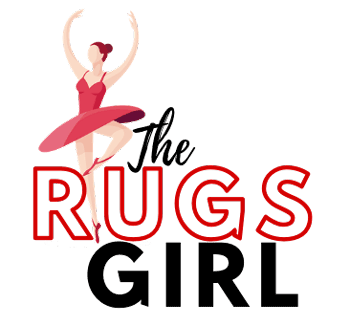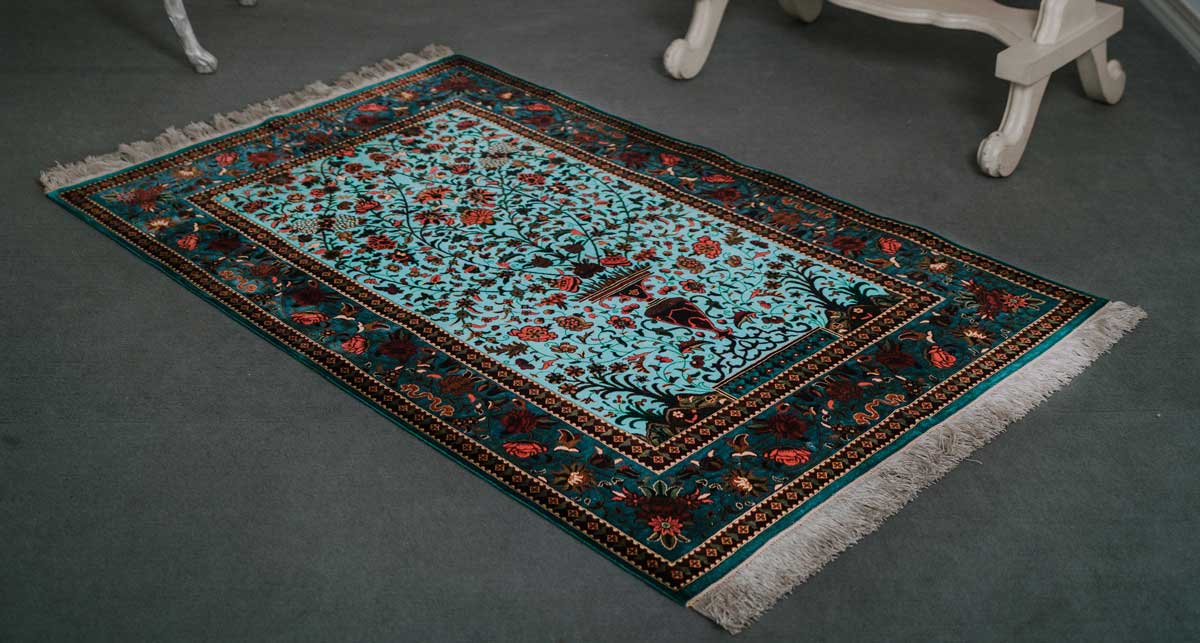How To Keep Rugs From Slipping On Tile
Welcome to this guide where we shall talk about how to keep rugs from slipping on tile.
Small rugs will move, bunch up and even form folds on tile flooring if they are not well-anchored with a double-sided tape or a non-slip rug pad among other items used to keep a rug in place.
A rug that slips can cause serious fall accidents, especially to vulnerable groups like babies, pets, and elderly members in the family.
Related Posts
How to Keep Rugs From Sliding on Hardwood Floors
How To Keep Rugs From Sliding On Vinyl Floors
How To Keep Rugs From Slipping On Tile In 5 Effective Ways
1. Non-Slip Rug Pads

One quality about tile floors is that they can be highly slippery, and that is why you need an anti-slip underlay like a rug pad.
100% natural rubber is the material recommended for use in SMALL non-slip rug pads placed on tile floors.
If the rug is LARGE, 100% natural felt is the most recommended rug material.
You want to avoid rug pads made from cheap PVC materials because they can either get stuck on your floor or leave permanent residue marks.



Related posts
Best Non-Slip Rug Pad for Hardwood floors
Best Non-Slip Rug Pad For Laminate Floors
2. Anchoring

How about letting the legs of your sofa set, bed, dining table, coffee table or wall unit sit on the rug?
Those items act as anchors which puts some pleasure on the rug helping to keep it in place.
This is a great strategy for flattening rugs that have been folded, buckled or bumped up.
One drawback of this method is that you can easily destroy the rug fibers during movement of the heavy furniture if you are not careful. Use furniture sliders or movers to remove the possibility of such damages.
You can also practice furniture rearrangement from time to time to eliminate the possibility of areas where the furniture legs sit getting damaged more than other surfaces of the rug.
3. Rug Backing

Some rugs come without non-slip backing. For such rugs, you will need to buy a non-slip rug pad as explained above.
Other rugs come with backing with anti-slip properties.
Polypropylene, which has a shallow friction point, and latex rubber are the two common materials used in rug backing for tile floors.
The drawback of choosing this option is that rug with a non-slip backing tends to be more expensive than those without.
Another drawback is that rugs with non-slip backing will limit your décor options and freedom of choice because they are not versatile or common in the market.





Related Posts
How To Clean Bathroom Rugs With Rubber Backing
4. Silicone Caulk
![]()
Silicone caulk is an adhesive used to keep two surfaces together.
Put the caulk in a hot glue gun then apply it on the edges of the rug before sticking it on the floor.
The drawback of this method is that removing the rug from the floor can either damage the rug backing or leave permanent residue on the floor.
Hence, silicone caulk is only a solution for people who will leave the rug un-removed for many years.
In other words, it is a perfect solution for rugs used in commercial places like hotels, venues, and offices as opposed to used in homes.
I am sure you are going to spend lots of money installing or refinishing your tile floors, hence you don’t need anything that is likely to damage them.
5. Rug Grippers

Rug grippers work the same way as Silicone caulk where buy they stick together the backing of a rug to the surface of the tile floor.
The advantage of rug grippers over silicone caulk is that the damage they cause is lesser permanent and damaging.
Another advantage of rug grippers is that they are very inexpensive making them the most budget-friendly option on this list.
There are three main types of rug grippers – spray, rug tape, and Velcro.
Going for the double-sided carpet tape will give you a stronger bond of adhesive between the rug and the floor than a single-sided tape.
Velcro comes in the form of strips or square patches, which you can easily get in any hardware or home improvement shop near you. Unlike the spray, Velcro tends to last longer and form a stronger bond.
If you are looking for a temporary fix that will not serve you for many months or years, then going for a rug gripper spray can be the best solution in such a case.
Note: Before applying any rug gripper or silicone caulk, make sure you test it on a small surface of both the rug and the floor to make sure there are no extreme reactions to damages caused by the substances on the adhesives.













